

Articles
How To Store Clothes In Storage Unit
Modified: August 30, 2024
Looking for tips on storing clothes in a storage unit? Check out our helpful articles for expert advice and guidance.
(Many of the links in this article redirect to a specific reviewed product. Your purchase of these products through affiliate links helps to generate commission for Storables.com, at no extra cost. Learn more)
Introduction
When it comes to managing our wardrobe, there are times when we simply run out of space. Whether it’s due to seasonal clothing, lack of closet space, or a need to declutter, finding a solution to store your clothes becomes essential. That’s where a storage unit comes into play.
A storage unit can provide a safe and secure solution for storing your clothes when you don’t need immediate access to them. Not only does it help free up valuable space in your home, but it also allows you to keep your wardrobe organized and protected.
In this article, we’ll explore the benefits of using a storage unit for clothes, as well as provide practical tips on how to prepare and store your garments effectively. By following these guidelines, you can ensure that your clothes maintain their quality and are easily accessible when you need them.
Key Takeaways:
- Maximize space, protect clothes, and declutter your home by utilizing a storage unit for seasonal or infrequently used garments. Proper preparation, organization, and inventory management are key to maintaining an efficient and accessible storage system.
- Choose breathable, stackable containers, and hanging garment bags to protect clothes from moisture and pests. Label and inventory your items for easy retrieval, and utilize stackable storage solutions to optimize space and maintain an organized storage unit.
Read more: How To Store Doll Clothes
Benefits of Using a Storage Unit for Clothes
Using a storage unit for storing clothes offers several advantages that can make your life easier and more organized. Let’s take a look at some of the key benefits:
- Maximize Space: One of the primary benefits of using a storage unit is the ability to maximize the available space in your home. By moving seasonal clothing or items you don’t frequently use to a storage unit, you can free up valuable closet and drawer space.
- Declutter Your Home: Clutter can quickly accumulate in our living spaces, affecting our overall well-being and peace of mind. A storage unit provides a convenient solution to declutter your home and create a more organized living environment.
- Protect Your Clothes: Storage units are designed to keep your clothes safe and protected. They typically offer climate-controlled environments that prevent damage from extreme temperatures, humidity, and pests. This ensures that your clothes stay in excellent condition throughout their time in storage.
- Seasonal Storage: With changing seasons, you often need to rotate your wardrobe to accommodate different weather conditions. A storage unit allows you to keep your off-season clothes neatly stored and easily accessible for when you need them again.
- Extended Travel or Relocation: If you’re planning an extended trip or moving to a new location, a storage unit is a fantastic option to keep your clothes safe until you return or settle into your new home. It gives you peace of mind knowing that your garments are stored securely while you’re away.
- Extra Closet Space: If you have a limited amount of closet space in your home, especially in older or smaller houses, a storage unit can serve as an extension of your wardrobe. You can store off-season clothes or rarely worn items to free up more space in your closets for the clothes you use regularly.
Overall, using a storage unit for clothes offers convenience, organization, and protection for your garments. It allows you to make the most of the available space in your home while ensuring that your clothes remain in excellent condition until you’re ready to use them again.
Preparing Clothes for Storage
Before storing your clothes in a storage unit, it’s essential to properly prepare them to ensure they stay clean, fresh, and wrinkle-free. Here are some steps you can follow to prepare your clothes for storage:
- Clean Everything: Start by thoroughly washing or dry cleaning all of your clothes. Storing dirty clothes can lead to stains, odors, and the growth of mold or mildew. Make sure to follow the care instructions on each garment to prevent any damage during the cleaning process.
- Repair Damages: Check your clothes for any loose buttons, broken zippers, or loose threads. Repair or replace any damaged parts before storing them. This will help ensure that your clothes remain in good condition while in storage.
- Avoid Starch or Scented Products: Avoid using starch or scented products when preparing your clothes for storage. These can attract pests and potentially damage your garments. Opt for mild, unscented detergents and fabric softeners instead.
- Remove Excess Moisture: Make sure your clothes are completely dry before packing them for storage. Any residual moisture can lead to mold and mildew growth, causing irreversible damage to your garments. Hang your clothes to dry completely before packing them.
- Consider Using Vacuum Storage Bags: Vacuum storage bags are an excellent option for reducing the amount of space your clothes take up in storage. They remove excess air, making your clothes more compact and freeing up additional space.
- Use Acid-Free Tissue Paper: For delicate garments such as silk or lace, consider wrapping them in acid-free tissue paper. This helps prevent yellowing and keeps the fabric in optimal condition.
- Avoid Plastic Bags: It’s important to avoid storing your clothes in plastic bags, as they can trap moisture and promote the growth of mold and mildew. Opt for breathable storage containers or garment bags instead.
- Take Inventory: Before placing your clothes in storage, take inventory of what you’re storing. Create a detailed list or take photos to help you remember what you have in storage. This will make it easier to locate specific items when you need them later.
By following these preparation steps, you can ensure that your clothes are clean, well-maintained, and ready for storage. Taking the time to properly prepare your garments will help preserve their quality and make retrieving them from storage a breeze.
Sorting and Organizing Clothes
Sorting and organizing your clothes before storing them in a storage unit can make a world of difference when it comes to accessibility and maintaining the condition of your garments. Here are some tips to help you effectively sort and organize your clothes:
- Seasonal Separation: Divide your clothes into seasonal categories. This way, you can easily access the clothes appropriate for the current season while keeping the off-season clothes neatly stored away. Consider using separate containers or sections within the storage unit for each season’s clothes.
- Categorize by Type or Occasion: Within each seasonal category, further organize your clothes by type, such as tops, bottoms, dresses, or formal wear. This will make it easier to locate specific items when you need them and help prevent unnecessary rummaging through the storage unit.
- Use Clear Containers: Transparent storage containers or bins allow you to see the contents at a glance, making it easier to find what you’re looking for without having to open multiple containers. Label each container with its contents to further enhance organization.
- Utilize Drawer Dividers: If you’re storing smaller clothing items such as socks, underwear, or accessories, consider using drawer dividers within your storage containers. These dividers will help keep items separated and prevent them from getting tangled or misplaced.
- Create Zones: Assign specific areas or zones within the storage unit for different categories of clothes. For example, you could designate one area for casual wear, another for work attire, and another for special occasion outfits. This will further streamline the retrieval process and make finding what you need quick and easy.
- Create Labeled Shelves: If you have storage shelves within the unit, label each shelf based on the clothing category it will hold. This will prevent clothes from getting mixed up and ensure they remain organized throughout their time in storage.
- Rotate Clothing: To prevent wrinkles and creases, periodically rotate the folded or hanging clothes during their time in storage. This will help distribute any pressure points and keep your clothes looking fresh when you retrieve them.
- Keep Frequently Used Items Accessible: If there are certain clothes that you still plan to use while the rest are in storage, keep them near the front of the storage unit or in a separate section for easy access. This way, you can retrieve them without having to disrupt the entire organization of the unit.
By sorting and organizing your clothes in a systematic manner, you’ll save time and frustration when it comes to retrieving specific items from your storage unit. This level of organization will also help preserve the condition of your clothes and ensure they remain in pristine condition until you’re ready to use them again.
Choosing the Right Storage Containers
When it comes to storing your clothes in a storage unit, choosing the right containers is essential. The right storage containers will protect your clothes from dust, moisture, and pests, while also optimizing space. Here are some factors to consider when selecting storage containers:
- Breathable Materials: Look for storage containers made from breathable materials such as fabric or woven plastic. Avoid using airtight containers or plastic bags, as they can trap moisture and promote the growth of mold and mildew.
- Durable Construction: Opt for containers with sturdy construction to ensure they can withstand the rigors of storage and stacking. Look for containers made from high-quality materials that won’t easily tear or break.
- Size and Capacity: Consider the size and capacity of the storage containers. Choose containers that are spacious enough to accommodate your clothes without cramming them in. At the same time, make sure the containers are not too large that they waste space in the storage unit.
- Stackable Design: To make the most of your storage space, choose containers with a stackable design. This will allow you to stack them securely, maximizing vertical space within the storage unit.
- Clear Visibility: Transparent containers or containers with see-through windows are ideal for easy identification of the contents. Being able to see what is inside without having to open each container will save you time and effort.
- Handles or Wheels: Look for containers with handles or wheels for easy transportation and maneuverability. This will come in handy when you need to move the containers within the storage unit or relocate them to a different location.
- Moisture Resistance: Consider containers with moisture-resistant properties to protect your clothes from dampness. Look for containers with tight-fitting lids or those that come with moisture-absorbing packets or pouches.
- Pest Control: Choose containers with features that help prevent pests from getting inside, such as containers with secure lids or containers that can be sealed with tape. This will ensure that your clothes remain pest-free while in storage.
Remember to consider these factors when selecting storage containers for your clothes. Investing in high-quality containers will provide optimal protection for your garments and make organization within the storage unit much easier.
Read more: How To Store Latex Clothing
Folding and Packing Clothes Efficiently
Efficiently folding and packing your clothes is crucial for maximizing space and maintaining the condition of your garments while they’re in storage. Here are some tips to help you fold and pack your clothes efficiently:
- Use a Systematic Folding Method: To save space and minimize wrinkles, fold your clothes using a systematic method. One popular technique is the KonMari method, which involves folding clothes into compact rectangles that can be easily stacked or stored vertically.
- Utilize Space-Saving Techniques: Look for ways to maximize space within your storage containers. For example, you can roll up T-shirts or lightweight garments to save space and reduce wrinkles. You can also use vacuum storage bags to compress bulky items like sweaters or coats.
- Group Similar Items Together: Group similar items together before packing them. This will make it easier to locate specific items later and maintain organization within the storage unit. For example, fold all your jeans together, all your dresses together, and so on.
- Avoid Overstuffing: While it may be tempting to cram as many clothes as possible into each container, avoid overstuffing. Overfilling containers can lead to wrinkling, creasing, and damage to your clothes. Leave some room for your clothes to breathe and remain wrinkle-free.
- Separate Delicate Items: If you have delicate or easily damaged items of clothing, such as silk blouses or sequined dresses, consider placing them in individual garment bags or wrapping them in acid-free tissue paper before packing them. This will provide an extra layer of protection during storage.
- Keep Similar Styles or Outfits Together: If you have outfits that you like to wear together, such as a specific top with a particular pair of pants or a matching skirt and blouse, keep them folded or hung together in the same container. This will help you easily find complete outfits when needed.
- Label Each Container: To maintain organization and easily identify the contents of each container, label them. Use clear, legible labels or color-coded stickers to indicate the season or category of clothing stored inside. This will save you time and effort when searching for specific items later on.
- Fill Any Gaps: When packing your containers, try to fill any gaps or empty spaces with lightweight clothing items, such as scarves or socks. This will help prevent clothes from shifting during transportation or when moving containers within the storage unit.
- Keep Frequently Used Items Accessible: If there are clothes you’ll still need to access while the majority are in storage, keep them in a separate container or at the front of the storage unit for easy retrieval. This way, you won’t need to disrupt the entire organization of the unit.
By following these folding and packing strategies, you can optimize space, reduce wrinkles, and keep your clothes in excellent condition while they’re in storage. Taking the time to pack your clothes efficiently will make retrieving specific items a breeze and help preserve the overall organization of your storage unit.
Storing Clothes in Hanging Garment Bags
Hanging garment bags are an excellent option for storing clothes that are prone to wrinkling, such as dresses, suits, or delicate fabrics. Here are some tips for properly storing clothes in hanging garment bags:
- Choose High-Quality Garment Bags: Invest in high-quality garment bags that are made from breathable materials and have a sturdy construction. Look for bags with built-in hangers or reinforced hanger slots to ensure your clothes stay securely hung.
- Clean and Prepare Your Clothes: Before hanging clothes in garment bags, make sure they are cleaned and free from any dirt or stains. Iron or steam any wrinkles out of the garments before hanging them to help maintain their pristine condition.
- Use Proper Hangers: Select the appropriate hangers for your clothes. Avoid using wire hangers or flimsy plastic hangers, as they can lead to shoulder bumps or sagging. Opt for sturdy, padded, or velvet-lined hangers to properly support the weight of your garments.
- Group Similar Items Together: Organize your clothes within the garment bags by grouping similar items together. For example, hang all dresses together, suits together, and shirts together. This will make it easier to locate specific items and maintain an organized wardrobe.
- Leave Space Between Garments: Allow some space between each garment inside the bag to prevent them from rubbing against each other and causing damage. This will also prevent wrinkles from forming due to overcrowding.
- Close and Secure the Garment Bag: Once your clothes are neatly hung inside the garment bag, zip it up completely to protect your garments from dust, insects, and moisture. Ensure that the bag is securely closed and the zipper is fully engaged.
- Hang Garment Bags in a Temperature-Controlled Area: Store your hanging garment bags in a temperature-controlled area of the storage unit. Extreme temperatures can affect the quality of your clothes, so it’s crucial to choose a location that is protected from temperature fluctuations.
- Rotate Garments Periodically: To avoid sagging or distortion, periodically rotate the garments within the garment bags. This will help distribute any weight and pressure points, ensuring that your clothes stay in their best shape while in storage.
- Check on Your Clothes Regularly: While stored in garment bags, it’s a good idea to check on your clothes periodically. Inspect for any signs of damage, mold, pests, or moisture. By catching any issues early on, you can address them before they cause significant damage.
- Protect with Acid-Free Tissue Paper (Optional): For delicate fabrics or items with intricate detailing, consider wrapping them in acid-free tissue paper before placing them in the garment bags. This provides an extra layer of protection against any potential snags or damage.
By following these guidelines, you can ensure that your clothes stored in hanging garment bags remain wrinkle-free, well-organized, and in excellent condition. Hanging garment bags provide an ideal storage solution for your most cherished and easily wrinkled clothing items.
When storing clothes in a storage unit, use plastic bins with tight-fitting lids to protect them from dust and pests. Make sure the clothes are clean and completely dry before storing to prevent mold and mildew.
Using Shelves and Drawers for Storage
In addition to hanging garment bags, shelves and drawers are essential components for organizing and storing clothes in a storage unit. Here are some tips on how to effectively use shelves and drawers for clothing storage:
- Select Sturdy and Adjustable Shelves: Invest in sturdy shelves that can support the weight of your clothes. Adjustable shelves are beneficial as they allow for customization based on the height of the items you plan to store.
- Sort and Fold Clothes: Before placing clothes on the shelves, sort and fold them neatly. Group similar items together, such as T-shirts, sweaters, or jeans. This will make it easier to locate specific items and maintain a well-organized storage space.
- Utilize Drawer Dividers: If you have drawers available within your storage unit, consider using drawer dividers to keep your folded clothes organized. Dividers will help separate different clothing types and prevent them from shifting or getting mixed up.
- Place Fragile Items on Upper Shelves: When using shelves, it’s a good idea to place more delicate or fragile items on the upper shelves. This will help protect them from potential damage or accidental contact.
- Store Bulky or Heavy Items at the Bottom: Place bulkier or heavier clothing items at the bottom of the shelves, as this will provide a stable base and prevent them from toppling over or causing damage to lighter items.
- Utilize Baskets or Storage Bins: If you prefer a more visually appealing storage solution, consider using baskets or storage bins on the shelves. These containers can hold folded clothes and add a decorative touch to your storage unit.
- Label Shelves and Drawers: To maintain organization and easily locate specific items, label the shelves and drawers. Use clear, legible labels or color-coded stickers to indicate the clothing category or specific items stored in each space.
- Stack Folded Clothes Vertically: If space allows, stack your folded clothes vertically rather than horizontally. This technique, also known as vertical folding or file folding, maximizes space and allows for easy visibility and access to each item.
- Rotate Clothing within Drawers and Shelves: Similar to hanging garment bags, periodically rotate clothing within drawers and shelves. This will help prevent any permanent creases or indents from forming due to extended periods of storage.
- Use Shelf Liners: Consider using shelf liners to protect your clothes from dust and maintain the cleanliness of the shelves. Opt for non-adhesive, non-slip liners that are easy to clean and maintain.
By utilizing shelves and drawers effectively, you can create a well-organized storage space for your clothes. Whether you’re storing folded items or bulky garments, these tips will help you make the most of your storage unit and keep your clothes easily accessible and in great condition.
Protecting Clothes from Moisture and Pests
Moisture and pests can pose significant threats to the condition and longevity of your stored clothes. It’s important to take precautions to protect your garments from these potential hazards. Here are some tips for keeping your clothes safe from moisture and pests:
- Choose a Climate-Controlled Storage Unit: Opt for a storage unit with climate control. This feature helps regulate temperature and humidity levels, creating an optimal environment for your clothes. Extreme temperatures and high humidity can lead to mold, mildew, and fabric damage.
- Use Desiccants or Moisture Absorbers: Place desiccants or moisture-absorbing packets in the storage containers to prevent excess moisture. These substances help absorb moisture from the air, reducing the risk of mold or mildew growth on your clothes.
- Avoid Plastic Bags: Refrain from storing your clothes in plastic bags, as they can trap moisture and lead to mold and mildew. Opt for breathable storage containers made from fabric or woven plastic materials.
- Seal the Storage Containers: Ensure that the storage containers are properly sealed to prevent any moisture or pests from entering. Use tape or sealable containers to create a barrier against external elements.
- Inspect Clothes Before Storage: Before packing your clothes for storage, carefully inspect each item. Look for any signs of pests, such as moths, carpet beetles, or spiders. If you find any infested garments, take appropriate measures to treat and clean them before storing them with your other clothes.
- Use Natural Pest Repellents: Employ natural pest repellents, such as cedar blocks or lavender sachets, to ward off insects. Place these items within your storage containers or hang them on hangers alongside your clothes.
- Maintain Good Hygiene: Ensure that your clothes are clean and free from any food or residue before placing them in storage. Food particles or stains can attract pests and can lead to fabric damage or unwanted odors.
- Regularly Inspect and Clean: Make it a habit to periodically inspect your stored clothes for any signs of pests or moisture damage. Take the time to air out your storage unit and clean the containers to prevent the accumulation of dust or debris.
- Consider Pest Control Measures: If you live in an area with a high risk of pests, such as rodents or insects, consider using pest control measures in and around your storage unit. Consult with pest control professionals to determine the best methods for preventing infestations.
- Store Valuable or Delicate Items Separately: If you have valuable or delicate items of clothing, consider storing them separately from your regular clothes. Use specialized storage bags or containers designed for preserving delicate fabrics and protecting against pests and moisture.
By taking these precautions, you can protect your clothes from moisture and pests while they are in storage. By keeping your garments in a clean and controlled environment, you ensure their longevity and maintain their quality for future use.
Read more: How To Store Cloth Napkins
Labeling and Inventory Management
Labeling and inventory management are crucial aspects of organizing your clothes in a storage unit. Proper labeling ensures that you can easily locate specific items and maintain an organized system. Here are some tips for effective labeling and inventory management:
- Create a System: Establish a labeling and inventory system that works for you. This can be as simple as numbering containers or using color-coded labels. Choose a method that is intuitive and easy for you to understand and follow.
- Label Each Container: Clearly label each storage container with its contents or the category of clothing stored inside. Use waterproof and legible labels or color-coded stickers to make identification quick and straightforward. This will save you time when searching for specific items in the future.
- Keep an Inventory List: Create and maintain an inventory list of the clothes you have stored in each container or section of the storage unit. Note down the items you store, their quantity, and any relevant details. This list will serve as a reference and help you keep track of your belongings.
- Update the Inventory Regularly: As you add or remove items from the storage unit, make sure to update your inventory list accordingly. This will help you keep track of what you have in storage and avoid confusion or misplaced items.
- Use a Digital Inventory Management System: Consider using a digital inventory management system to keep track of your stored clothes. There are various smartphone apps or online tools available that allow you to create a digital inventory and easily update it whenever needed.
- Group Similar Items Together: Within your inventory list, group similar items together to make retrieval easier. For example, group all your summer dresses or winter sweaters together. This will help you quickly locate specific types of clothing when needed.
- Include Additional Details: Alongside each item in your inventory list, consider including additional details such as the color, size, or any special notes about the item. This will provide more specific information and facilitate a more comprehensive inventory management process.
- Take Photos: As an additional measure, consider taking photos of each stored container or section of the storage unit. This visual reference can assist you in quickly identifying the location of specific items without having to physically search through the entire unit.
- Organize Inventory by Accessibility: Prioritize the order of your inventory list based on the accessibility of the items in the storage unit. Place frequently needed or seasonal items at the beginning of the list to streamline the retrieval process.
- Regularly Review and Audit: Periodically review and audit your inventory list to ensure its accuracy. Remove any items that you no longer have in storage and identify any gaps or inconsistencies in your records.
By implementing effective labeling and maintaining a well-organized inventory management system, you can easily locate specific items, keep track of your stored clothes, and maintain a sense of order within your storage unit. This level of organization will save you time and effort when retrieving clothes and help ensure that your inventory remains up to date.
Stackable Storage Solutions
When it comes to optimizing space in your storage unit, stackable storage solutions are a game-changer. These solutions allow you to maximize vertical space and create organized and efficient storage systems. Here are some tips for using stackable storage solutions:
- Choose Stackable Containers: Look for storage containers specifically designed to be stackable. These containers often have interlocking lids or grooves that securely stack on top of one another, creating stability and preventing slipping or toppling.
- Consider Clear Containers: Opt for clear storage containers to easily see and identify the contents without having to open each container. This saves time and effort, especially when you’re searching for specific items in a densely stacked storage unit.
- Sort and Group Similar Items: Before stacking the containers, sort and group similar items together. This will make it easier to locate specific items later on and help maintain an organized system. Label each container accordingly to indicate its contents.
- Ensure Proper Weight Distribution: When stacking containers, distribute the weight evenly to prevent the lower ones from collapsing or being damaged by excessive weight. Place heavier items at the bottom and lighter ones on top.
- Use Stackable Drawers or Bins: Consider using stackable drawers or bins that can easily slide in and out. These provide convenient access to your clothes without the need to unstack or shift multiple containers.
- Utilize Stackable Shelving Units: If your storage unit allows, consider investing in stackable shelving units. These units can be customized and adjusted to fit the height and size of your containers, maximizing vertical storage space.
- Secure the Stacked Containers: To ensure stability, use straps or bungee cords to secure the stacked containers together. This prevents shifting or accidental toppling, especially if the storage unit is subject to movement or vibrations.
- Leave Clearance Space: When stacking containers, leave a small clearance space between the top of one container and the bottom of the next. This allows for air circulation and prevents compression on the items inside.
- Group Frequently Accessed Items on Top: When organizing your stackable storage system, keep frequently accessed items towards the top for easier retrieval. This avoids the need to unstack multiple containers or rearrange the entire stack.
- Regularly Reorganize and Update: Periodically reassess and reorganize your stackable storage system to accommodate any changes in your clothing inventory. As you access or remove items, take the opportunity to re-stack containers to optimize space.
By utilizing stackable storage solutions, you can make the most of the available vertical space in your storage unit. This allows for efficient organization, easy access to your clothes, and a well-utilized storage system that keeps your garments safe and accessible.
Retrieving Clothes from Storage
When the time comes to retrieve your clothes from storage, having an organized system in place will make the process much smoother and more efficient. Here are some tips to help you retrieve your clothes from storage:
- Refer to Your Inventory List: Start by consulting your inventory list to quickly identify the location of the clothes you need. Cross-reference the list with the labels on the containers or sections of the storage unit to locate the specific items you’re looking for.
- Access Frequently Used Items First: If you have stored clothes that you anticipate needing more frequently, keep them in an easily accessible area. This way, you can retrieve them without having to navigate through the entire storage unit.
- Unstack Containers Carefully: If your clothes are stored in stacked containers, unstack them carefully to avoid any potential falls or accidents. Remove the top container first and place it aside before moving on to the next one.
- Open Containers Systematically: When opening containers, do so one at a time and in an organized manner. Avoid leaving containers open and unattended, as this can lead to misplaced items or accidental damage.
- Inspect Clothes for Damage: As you retrieve your clothes, inspect each item for any signs of damage, stains, or pests. If you notice any issues, address them promptly to prevent further damage or spread to other clothes.
- Organize and Fold as You Go: As you retrieve clothes from storage, take the opportunity to organize and fold them immediately. This will help prevent wrinkles and keep the clothes in good condition.
- Rotate Stored Clothes: If you’re only retrieving a portion of your stored clothes, take the opportunity to rotate the remaining items. This helps ensure equal usage and prevents clothes from sitting unused for extended periods.
- Reorganize and Restack Containers: Once you have retrieved the clothes you need, reorganize and restack the containers if necessary. This will help maintain an organized storage unit for future retrieval and storage needs.
- Update Your Inventory List: After retrieving your clothes, update your inventory list to reflect the changes in your storage. Remove or mark the items you have retrieved, making sure your inventory remains accurate and up to date.
- Close and Secure Containers: Once you have finished retrieving clothes and restacking containers, make sure to close and secure each container properly. This ensures that your remaining clothes are protected and maintain their condition while in storage.
By following these tips, you can retrieve your clothes from storage in an organized and efficient manner. A well-maintained storage system, along with a thorough inventory list, will save you time and effort, allowing you to easily locate and access the clothes you need when you need them.
Conclusion
Storing clothes in a storage unit can help free up valuable space in your home and keep your wardrobe organized. By following the tips and guidelines outlined in this article, you can ensure that your clothes are properly prepared, organized, and protected during their time in storage.
Benefits of using a storage unit for clothes include maximizing space, decluttering your home, protecting your clothes from damage, and providing a designated space for seasonal clothing or items you don’t frequently use. By utilizing a storage unit, you can create a more organized living environment and easily access your clothes when you need them.
To prepare your clothes for storage, make sure to clean them thoroughly, repair any damages, and remove excess moisture. Consider using vacuum storage bags, acid-free tissue paper for delicate items, and avoiding plastic bags to ensure the best condition for your clothes in storage.
Sorting and organizing your clothes is essential to maintain an efficient storage system. Separate clothes by season or type, utilize clear containers, and label each container for easy identification. Proper folding and packing techniques can help save space and prevent wrinkles, while hangers and hanging garment bags are ideal for delicate or easily wrinkled items.
Choosing the right storage containers, such as breathable and stackable options, is crucial for protecting your clothes. Taking precautions against moisture and pests is vital to preserving the quality of your garments. Labeling and maintaining an inventory list will aid in locating specific items and keeping track of your stored clothing.
Utilizing shelves, drawers, and stackable storage solutions optimize space in your storage unit. By appropriately stacking containers and systematically organizing your clothes, you can make the most of the available vertical space.
When it’s time to retrieve your clothes from storage, referring to your inventory list and organizing the process will ensure a smooth and efficient retrieval experience. Taking care to inspect clothes for damage and reorganizing as you go will help maintain the condition of your garments.
In conclusion, with proper preparation, organization, and storage techniques, a storage unit can be a practical solution for managing your clothes. By implementing the tips in this article, you can ensure that your clothes remain in excellent condition while they’re not in use, allowing you to enjoy a clutter-free living space and effortlessly retrieve your clothes when needed.
Frequently Asked Questions about How To Store Clothes In Storage Unit
Was this page helpful?
At Storables.com, we guarantee accurate and reliable information. Our content, validated by Expert Board Contributors, is crafted following stringent Editorial Policies. We're committed to providing you with well-researched, expert-backed insights for all your informational needs.




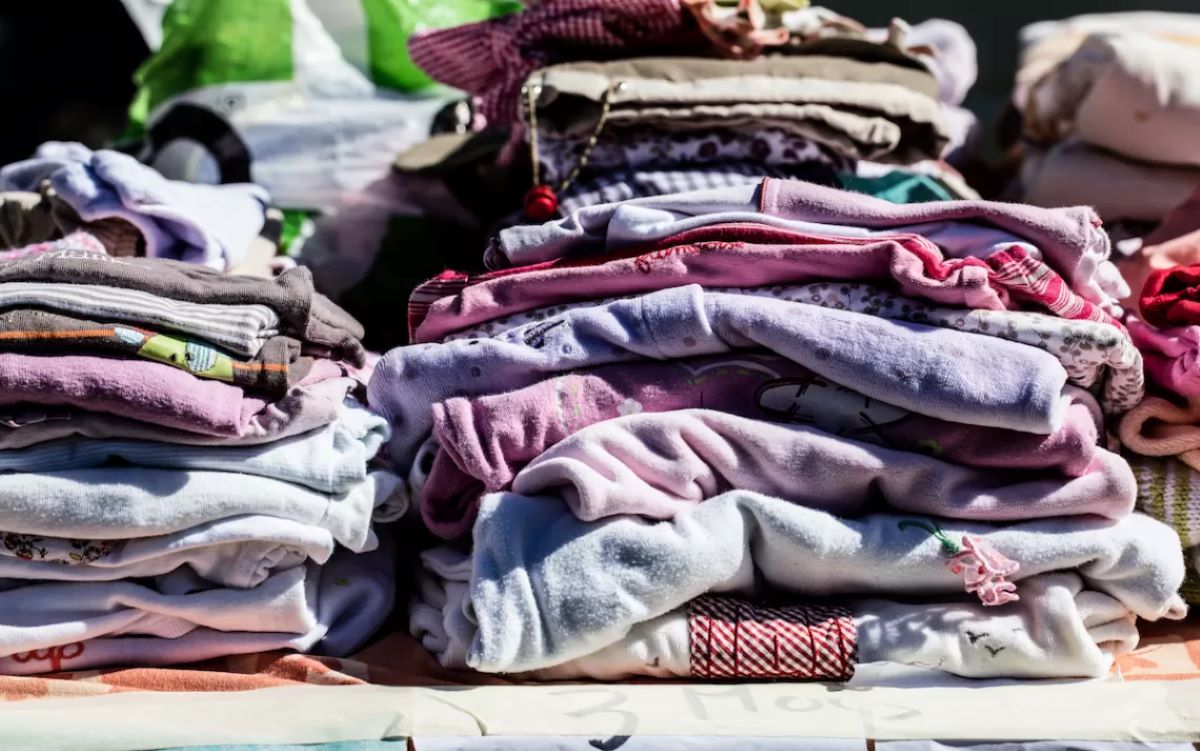
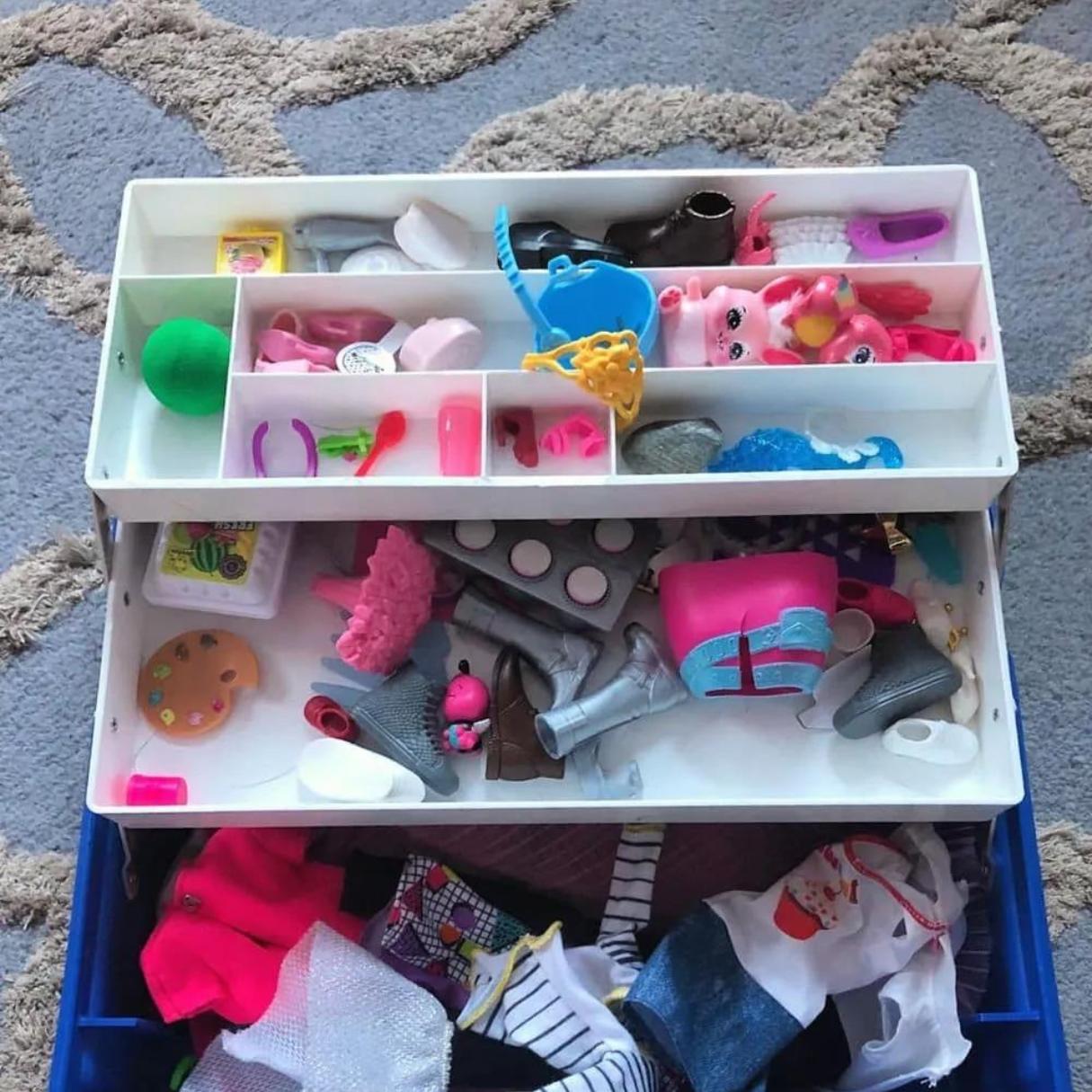

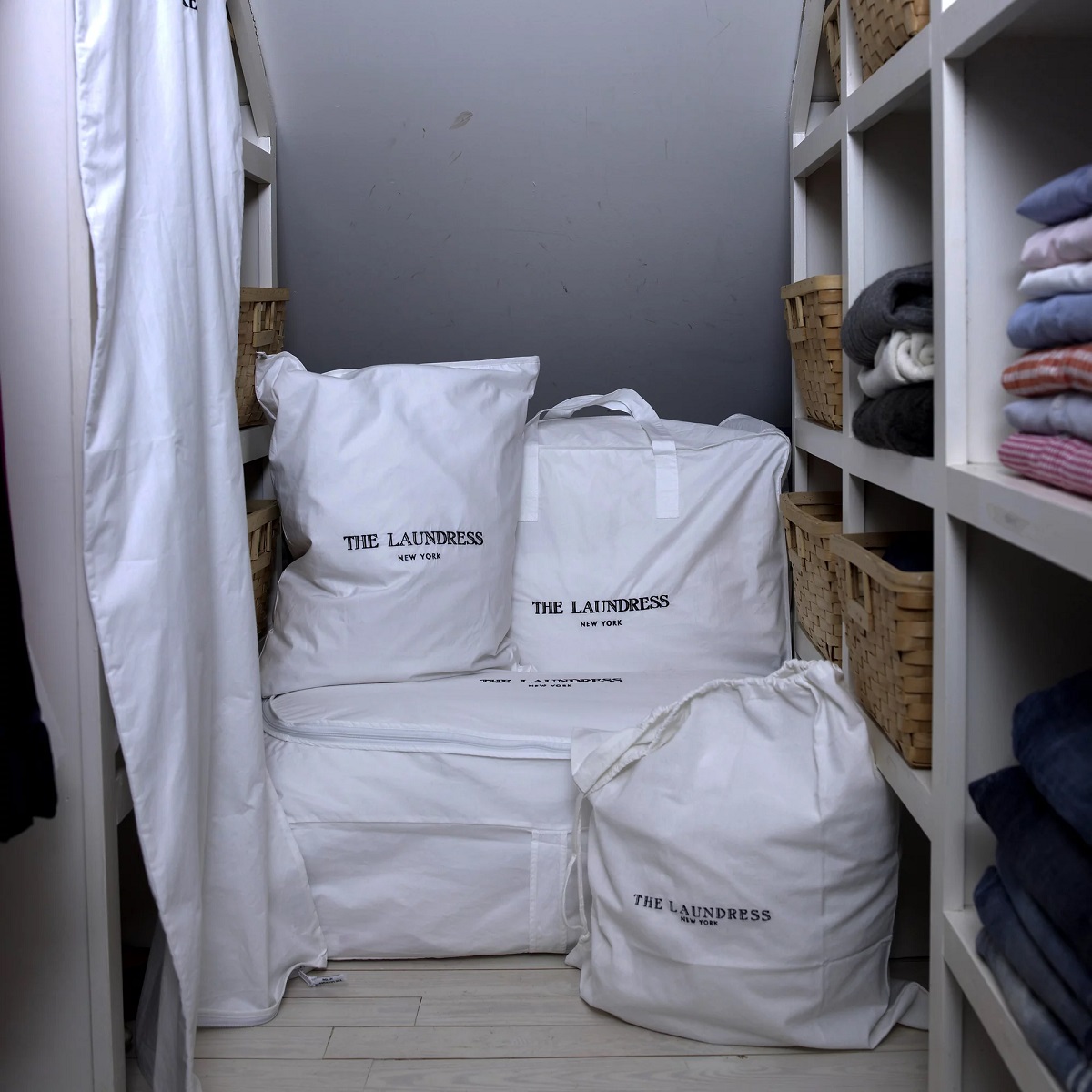



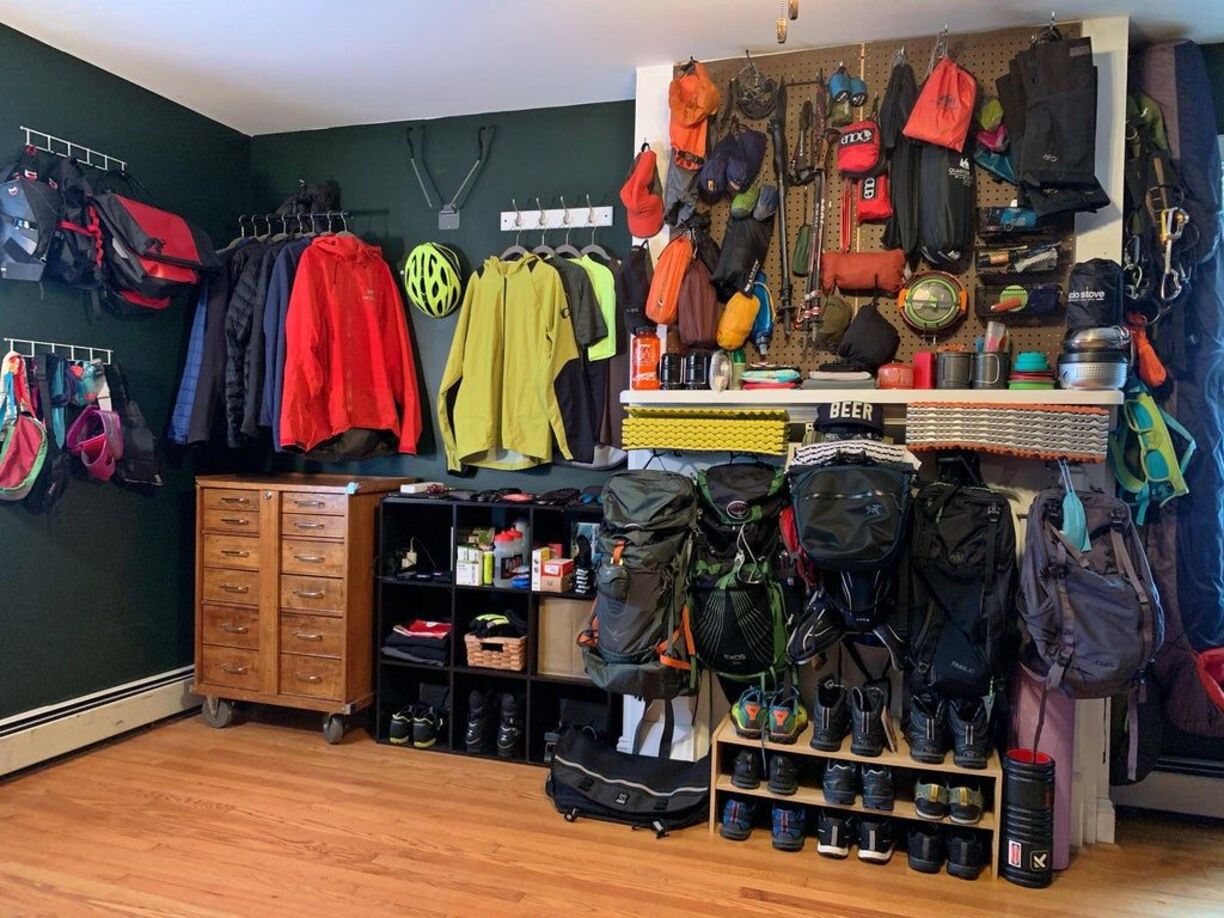
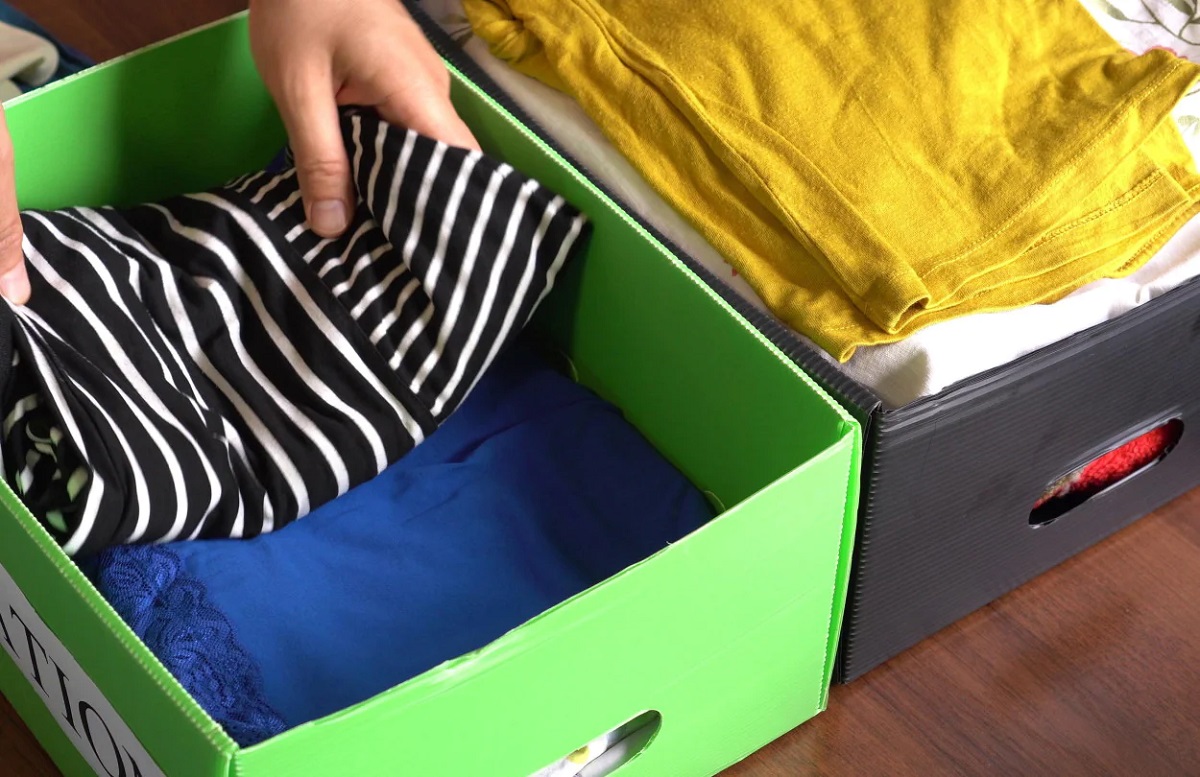

0 thoughts on “How To Store Clothes In Storage Unit”